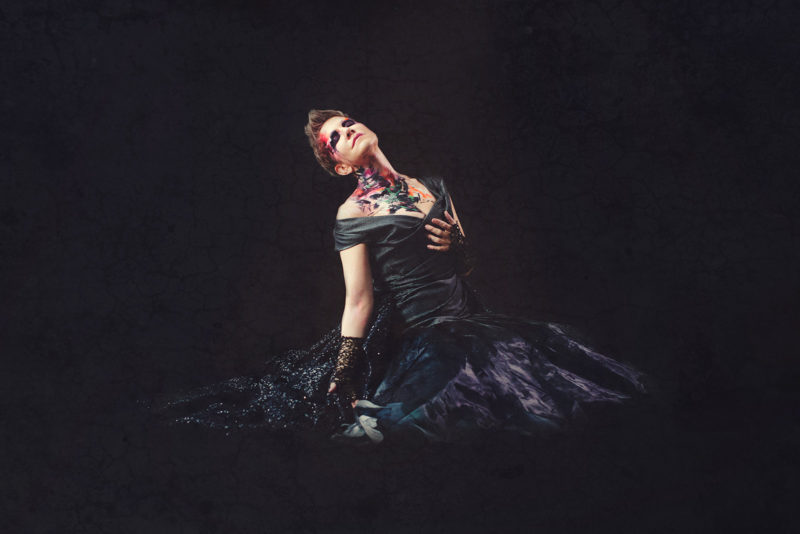Presto Classical
Whilst she was in London last month, Joyce kindly found time to answer our 4 questions about the project on camera ‑ you can view the ensuing short videos below, and read the questions along with the full transcripts underneath.
Presto Classical

“In the midst of chaos, how do you find peace?” – Joyce DiDonato didn’t initially set out to address such a weighty question with her new recording on Erato, but the horrific events which unfolded during the preparation-stage prompted a sudden and dramatic change in direction. The American mezzo was hard at work researching repertoire for a sequel to her acclaimed Drama Queens disc last November when news broke of the terrorist attacks in Paris, and immediately felt compelled to respond by focusing her energies on exploring music which confronts the horrors of conflict and, more importantly, the possibility of achieving some kind of ‘harmony through music’.
Featuring music by Jommelli, Leo, Handel, Monteverdi and Purcell, In War and Peace explores the psychology of various baroque characters caught in the midst of conflict and/or trying to negotiate some sort of resolution to the discord which surrounds them, ranging from the abject despair of Purcell’s Dido and the impotent rage of Handel’s Sesto to the post-war jubilation of Handel’s Cleopatra.
Questions 1-3: Joyce talks about portraying victims, strong women and working with Il Pomo d’Oro
Full transcript of this 6 minute video:
Question 1: Most of the characters who appear on the disc are victims of conflict rather than aggressors or warriors: was it a conscious decision to focus on them rather than on figures who glorify war?
It is true that a lot of the characters I’m singing in this project are a little bit on the victim side (certainly not Agrippina – she’s the instigator!), but I think in opera when you have the victim as the person suffering …well, it gives a great landscape for suffering through the opera, which of course we love. But I think one of the things I have tried to do in this project is also show those that are in a way victims of glorifying war – Alcina’s internal war, for example. When we have the opening track, ‘Scenes of horror’, it’s taking in this landscape and commenting on the darkness of it and the horror of it. It was very important to me to show the darkness, and to show the rubble, and the torment of being in the throes of war. We needed to start there so that the art coming out into the light, into tranquillity, into peace, actually emerges from somewhere – and the truth is that the dark side is a part of each of us as a human being. But we also have the light side, and we have the idea of being able to encompass both of those things. My hope is that this project will give us a little bit more chance to implement the power to choose which side of that we nourish and which side of ourselves we engage and react with. So it was important to show the darkness in order to propel ourselves into the light.
Question 2: Several of the women here would be equally at home on *Drama Queens (and vice versa) – did this project grow out of the material you explored with that earlier disc?*
One of the reasons I adore the world of baroque music is that the composers have given us incredibly flawed, empowered, strong, weak, tyrannical and magical female figures. From Alcina to Agrippina to Dido to Cleopatra…there’s this huge range of powerful and yet fragile women. I still have yet to understand how Handel could understand the true essence of a woman so completely as he does, but every time I enter into this world with these women who are against very strong circumstances and have to either collapse or find strength or search for it, not only does it give great dramatic impulse but also it opens up to these incredible vocal lines, either with fabulous fireworks or a kind of lamenting pathos, and those arias where we don’t know why but they make us weep. So it was lovely in the world of Drama Queens a few years ago to explore these specific women and I think it’s nice now to come into this world where we’re talking about war and peace and can we find a kind of tranquillity within, using mostly these very strong women. (We do have little Sesto in there as well, whom I’ve loved from the beginning of my career!), but I have to say it is truly a gift from these composers to sing such complicated and interesting women.
Question 3: You’ve been working with Il Pomo d’Oro a lot since the death of Alan Curtis last year – how different an experience is it to working with Il Complesso Barocco, and what’s special about them for you?
Ah, Il Pomo d’Oro!!! Not only have they been my musical companions for I think 13 years, going back to the first disc with divine Patrizia Ciofi, Amor e gelosia (recorded in a very hot studio in a hot summer in Firenze, I’ll never forget it!), so I’ve been with many of them for 13 years, and many of the members of Il Complesso Barocco have transferred into this band. We’ve grown together as musicians and artists, but also as friends – we’ve travelled the world together, we have explored all kinds of highs and lows on the stage, through the music of Alcina, Ariodante and Floridante, and now this world of war and peace, searching together to see if we can find harmony in music. It has really been a thrill to take this journey with them for so long, and of course it all goes back to Alan Curtis who founded Il Complesso Barocco and did an encyclopaedic amount of recording and research to be part of this huge baroque renaissance which we’re happily enjoying today, and one of the results of is this very dynamic versatile and vibrant group Il Pomo d’Oro. What’s really thrilling is that I know on this particular project they are my partner in creating a theatrical experience, both through the album and in our concert tour, so that we’ll join together telling the same story, asking the same questions, and putting out the same message of hope and of peace. They’re not just a band that accompanies a singer – they’re a group of earnest musicians and people that are really trying to say something with the music, and that’s why I love to work with them, why I keep coming back home together, and why we hope to see YOU in a concert around the world sometime!
Enjoy the entire feature at Presto Classical
